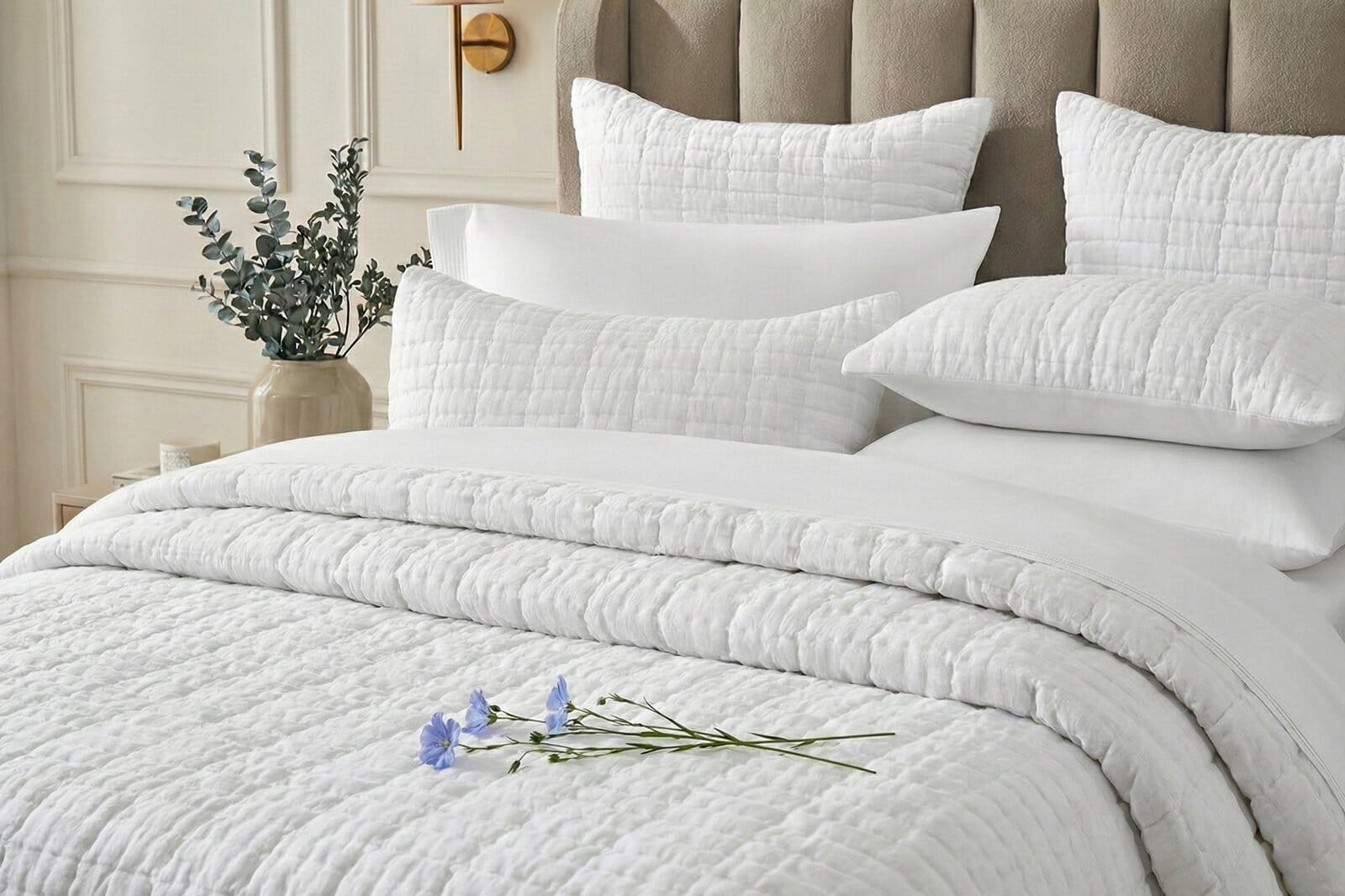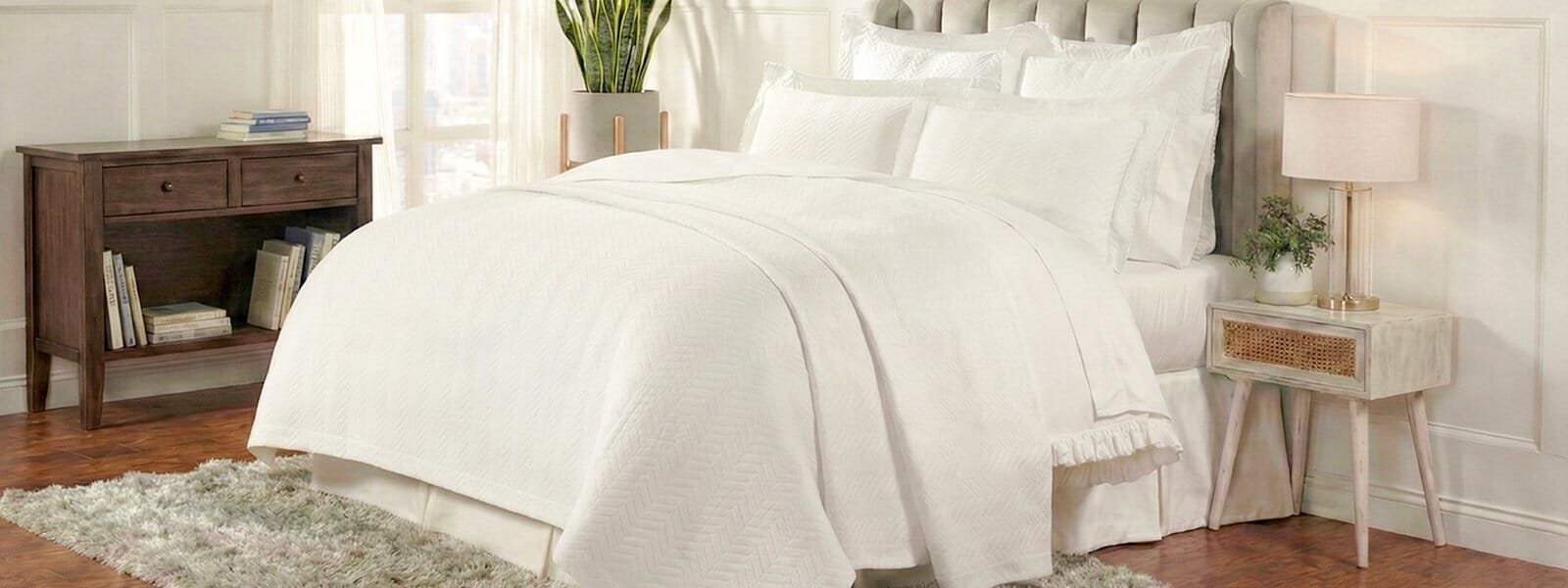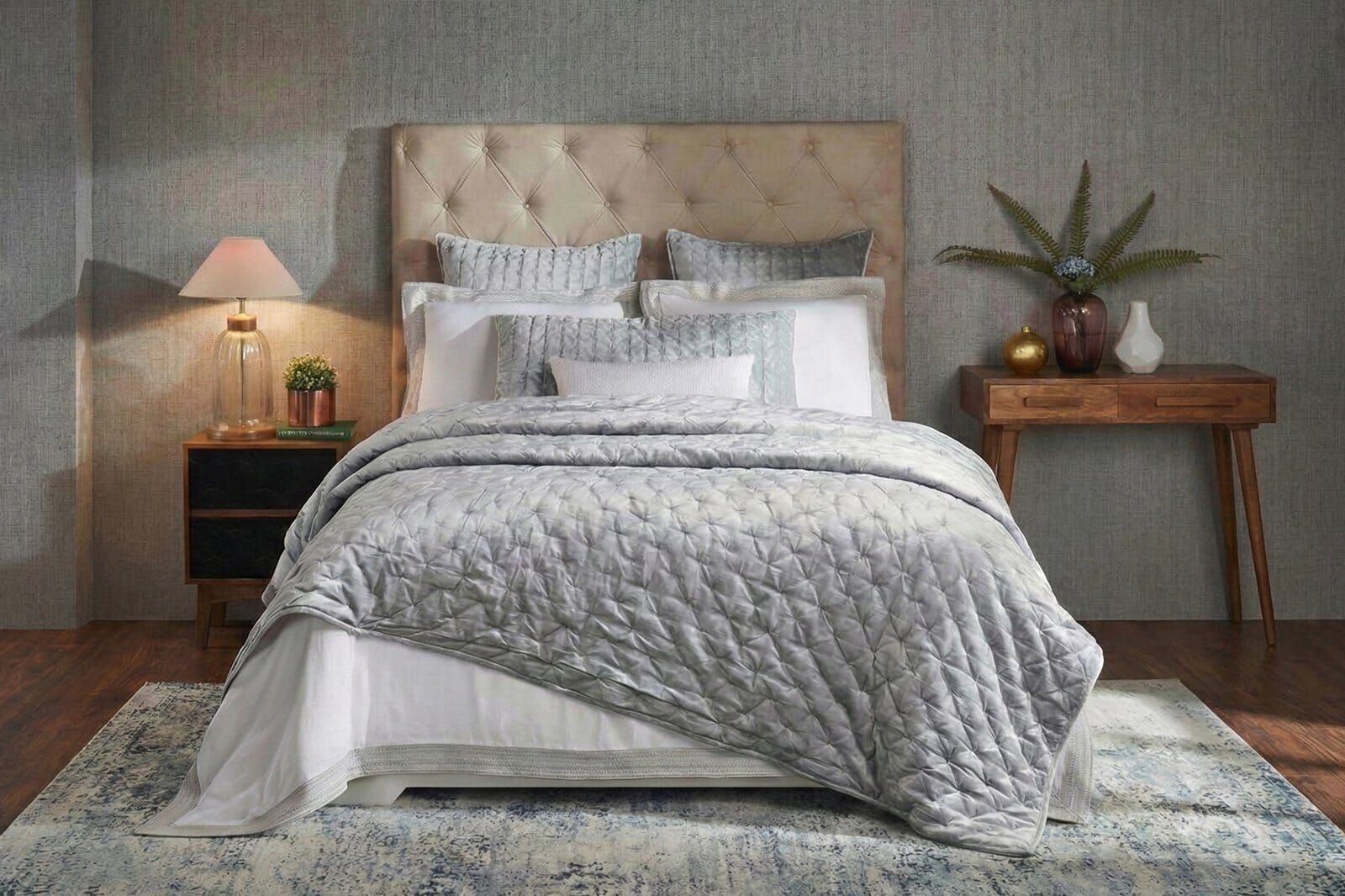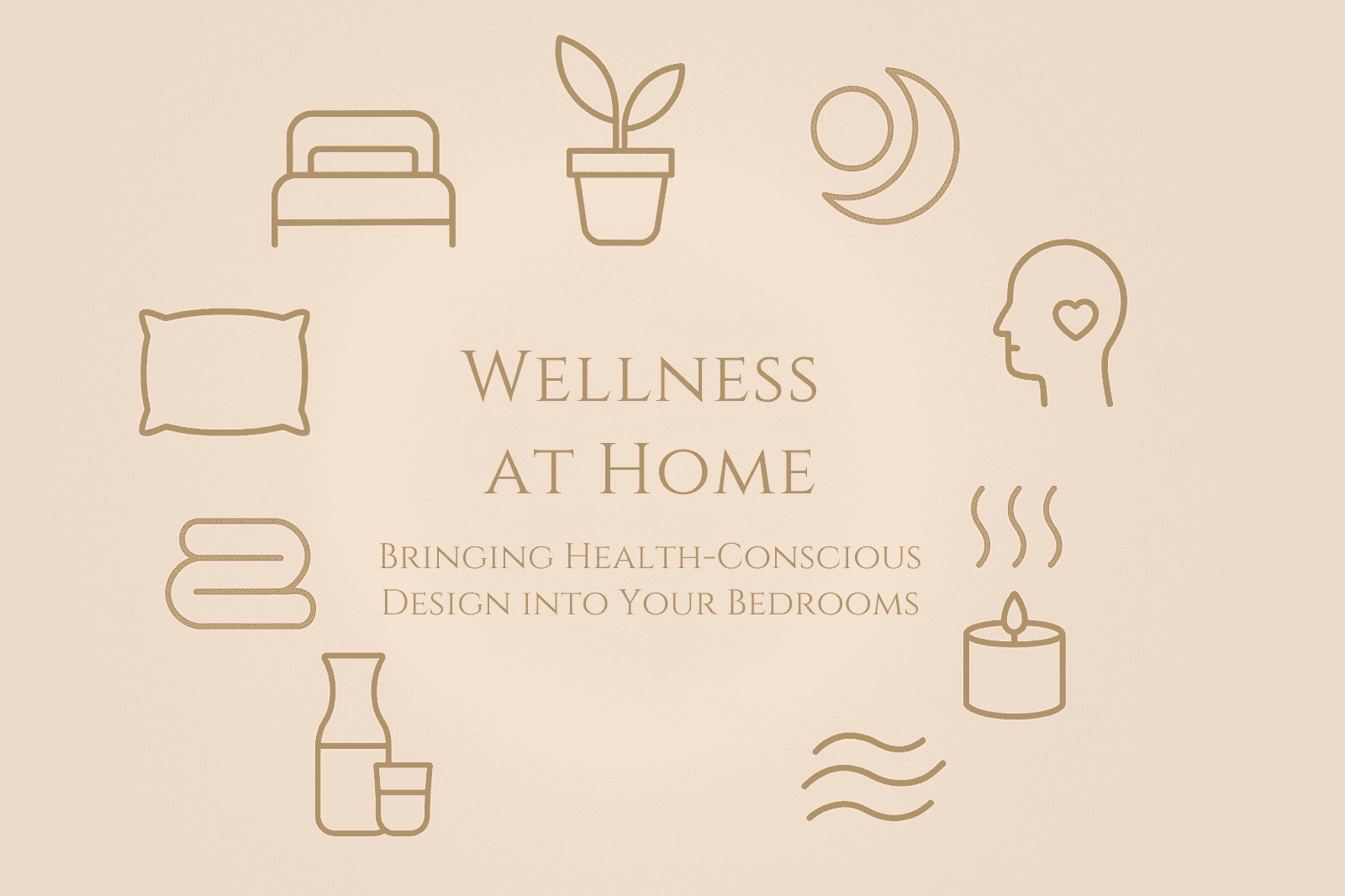
Wellness at Home: How to Bring Health-Conscious Design into Your Bedrooms?
The modern bedroom has evolved far beyond a simple place to rest. Today’s discerning homeowners are transforming their bedrooms into wellness spaces that nurture both body and mind. As we prioritize holistic well-being, bedroom design is embracing health-conscious elements that create spaces as restorative as they are beautiful.
The Rise of Wellness-Focused Bedroom Design
Wellness interior design trends for 2025 focus on creating spaces that promote mental, physical, and emotional well-being, and bedrooms are becoming the priority focus. Today’s premium bedrooms serve as personal retreats from our increasingly demanding world.
This shift reflects our deeper understanding of how the environment affects sleep quality, stress levels, and overall health. The bedroom is no longer just where we sleep; it’s where we recharge, restore, and prepare for each new day.
Natural Materials and Sustainable Choices
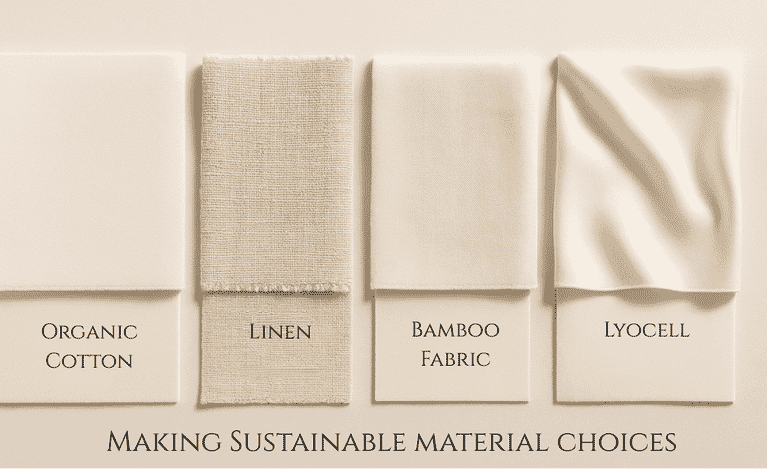
The foundation of any wellness-focused bedroom begins with choosing materials that support both comfort and health. Natural fibers offer distinct advantages over synthetic alternatives, creating environments that breathe with your body’s natural rhythms.
- Organic Cotton: Provides excellent breathability and long-lasting durability for year-round comfort
- Linen: Features a loose weave that offers superior temperature regulation and becomes softer with each wash
- Bamboo-derived fabrics: Naturally resist bacteria and moisture, making them perfect for sensitive skin or allergies
- Lyocell: Exceptionally soft and hypoallergenic, ideal for those with sensitive skin
When selecting bedding materials, consider how they interact with your body’s natural temperature regulation. The smooth surface of the fabric minimizes irritation and discomfort often associated with rougher materials, contributing to more restful sleep.
Sustainable Certifications
Modern wellness design embraces sustainability as an essential component of health-conscious living. Look for trusted certifications when selecting bedroom materials:
- OEKO-TEX Standard 100: Ensures textiles are free from harmful chemicals
- GOTS (Global Organic Textile Standard): Certifies organic fibers and ethical production
- FSC (Forest Stewardship Council): Certification for responsibly sourced wood furniture
These choices create healthier indoor environments while supporting responsible manufacturing practices that benefit both your family and the environment.
Creating the Optimal Sleep Environment
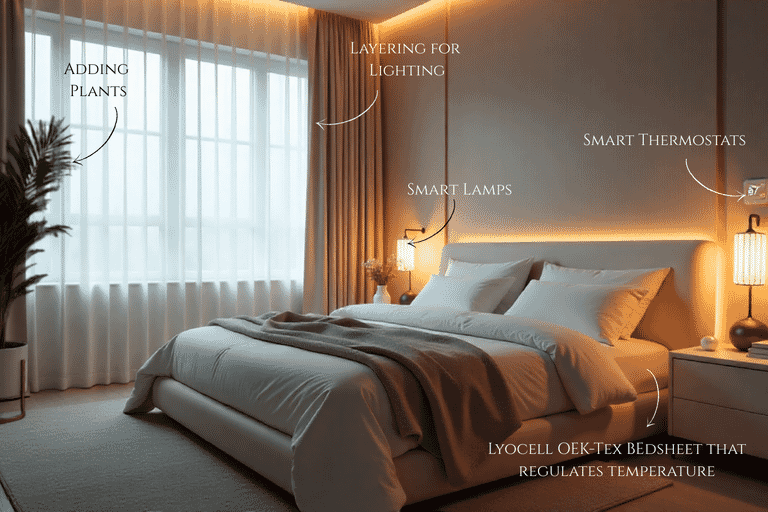
Temperature Control
Temperature regulation is fundamental to restorative sleep. Most sleep experts recommend maintaining a room temperature between 65-68°F (18-20°C). Natural materials that wick moisture and allow airflow help maintain this optimal temperature zone throughout the night.
Lighting Considerations
Lighting plays an equally important role in sleep quality. Complete darkness during sleep hours triggers proper melatonin production, the hormone responsible for regulating sleep-wake cycles. However, exposure to natural light upon waking is equally crucial for maintaining healthy circadian rhythms.
The ideal approach involves layered window treatments that offer flexibility throughout the day. Consider combining blackout curtains or shades with lighter panels that can be adjusted independently. This allows you to achieve complete darkness when needed while enabling gradual morning light exposure to naturally wake your body.lor sit amet, consectetur adipiscing elit. Ut elit tellus, luctus nec ullamcorper mattis, pulvinar dapibus leo.
Smart Technology Integration
While maintaining a screen-free bedroom is ideal, certain wellness technologies can enhance your sleep environment without creating a distraction:
- Smart thermostats: Quietly maintain optimal sleep temperatures throughout the night
- Air purification systems: Ensure clean, healthy air circulation
- Smart lighting systems: Mimic natural daylight patterns to support circadian rhythms, e.g. Gradually increase brightness to ease the transition from sleep to wakefulness
The key is choosing technology that works silently in the background, supporting your wellness goals without disrupting the peaceful atmosphere essential for quality rest.
Incorporating Nature and Mindful Elements
Modern bedrooms are incorporating elements that transform them into holistic spaces. This approach goes beyond beautiful aesthetics to create spaces that actively support mental and physical wellness.
Biophilic Design
Incorporating nature into interiors continues to grow in popularity, featuring large windows, indoor plants, and natural materials such as wood, bamboo, and stone. These elements promote calmness and improve mental health through connection with nature.
Mini green walls are trending for 2025, particularly ideal for urban dwellers with limited outdoor space. These living walls purify air while providing a visual connection to nature that reduces stress and improves mood.
Thoughtful Plant Selection
Choose plants that enhance both air quality and sleep environment:
- Snake plants: Filter toxins and produce oxygen during nighttime hours
- Peace lilies: Natural air purifiers that thrive in low light
- Spider plants: Easy-care options that remove harmful chemicals from the air
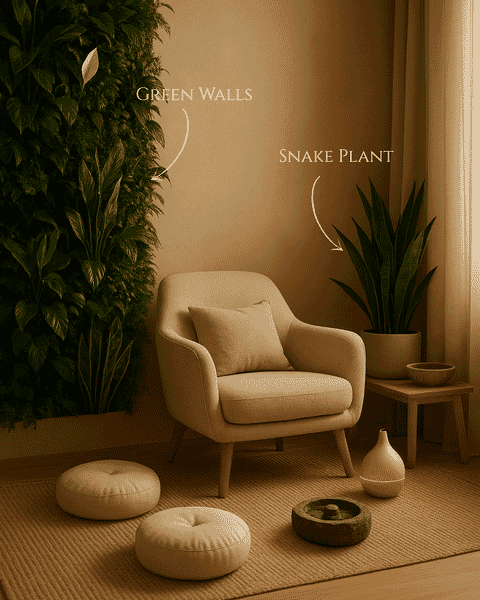
Creating Wellness Corners
Designate a wellness corner with a comfortable chair, small water feature, and plants to promote mindfulness. These elements establish a calming atmosphere that supports stress reduction and mental clarity. Consider adding meditation cushions, essential oil diffusers, or a small bookshelf with inspiring reads to enhance this dedicated space.
Color Psychology for Restful Sleep
Neutral and Nature-Inspired Color Palettes: Colors like greens, blues, and soft neutrals dominate, as they evoke tranquility and balance. These tones create a soothing environment, reducing stress.
Interior designers are seeing a move away from cooler colors and toward warmer, earthy tones, including rich beiges, terracottas, and browns. These grounding colors create a sense of security and comfort, essential for quality rest.
Read our blog on Psychology of Colours to deep dive into the topic
Flexible Spaces for Modern Living
Multifunctional and Flexible Spaces: With a focus on adaptability, rooms are designed for multiple uses, such as transitioning from workspaces to relaxation zones. This flexibility supports diverse lifestyle needs.
Consider furniture that serves dual purposes: a bench at the foot of the bed that provides storage, or a reading chair that can be repositioned for meditation. These pieces make the space functional, as well as restorative, for the way you live your life.
Creating Your Wellness Sanctuary
Transforming your bedroom into a wellness-focused space doesn’t require a complete overhaul. Start with small changes: introduce air-purifying plants, upgrade to natural fiber bedding, or create a dedicated space for mindfulness practices.
The goal is to create a space that supports your body’s natural rhythms, promotes restful sleep, and provides a peaceful environment from the demands of modern life. By thoughtfully incorporating wellness principles into premium bedroom design, you create more than just a beautiful space- you create a foundation for better health and well-being.
Remember, the most effective wellness bedroom is one that reflects your personal needs and preferences while supporting healthy sleep habits and overall well-being.
Sources
- Wellness by Dezign– https://www.wellnessbydezign.com/blog-2/h7f56e7rwhnj2ehxlz4835w4d4a3yb
- Decorilla– https://www.decorilla.com/online-decorating/2025-bedroom-trends-ideas/
- Elle Decor– https://www.elledecor.com/design-decorate/trends/a63352338/bedroom-design-trends-2025/
- Sleep Foundation– https://www.sleepfoundation.org/best-bedding/what-is-tencel-fabric

